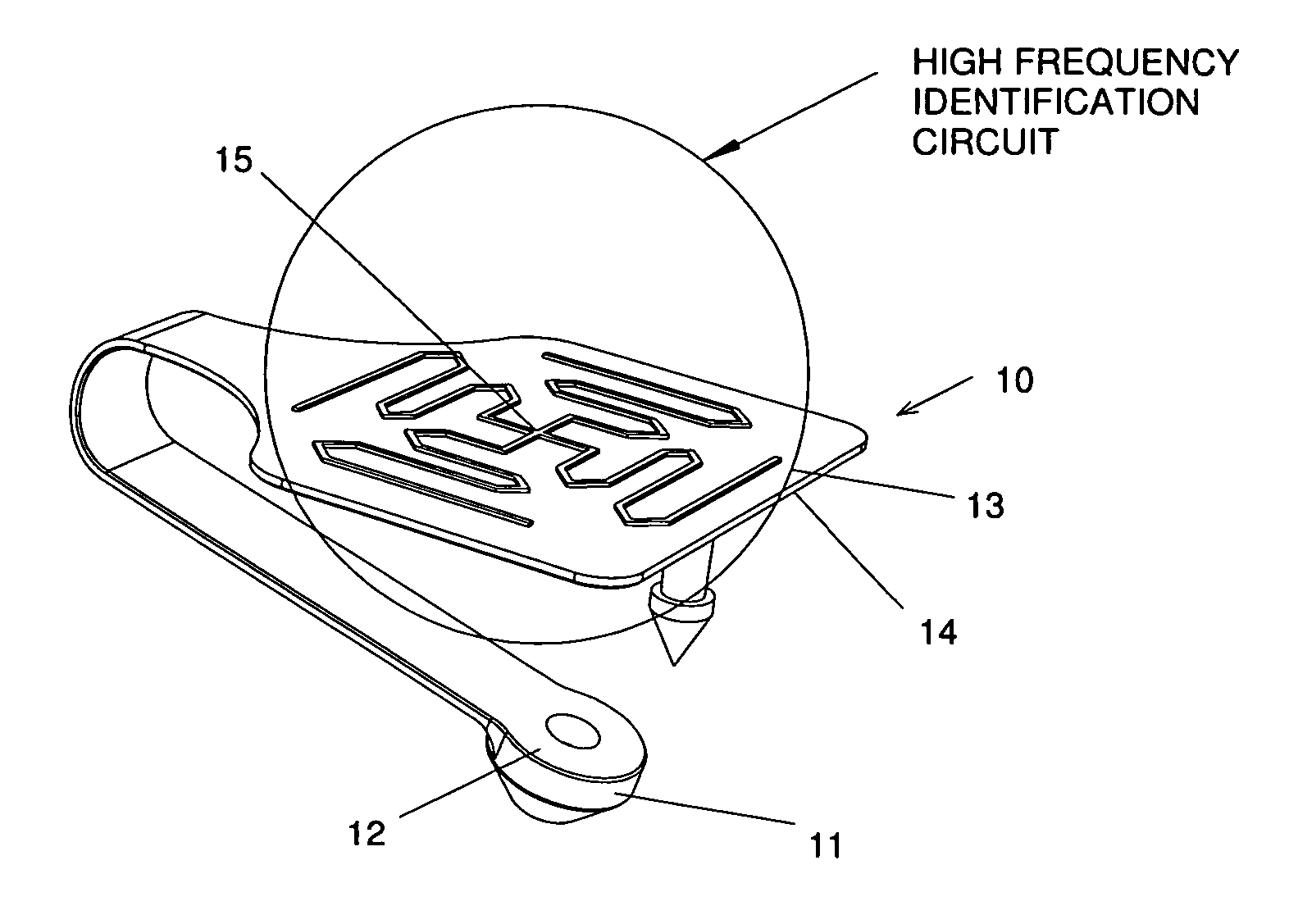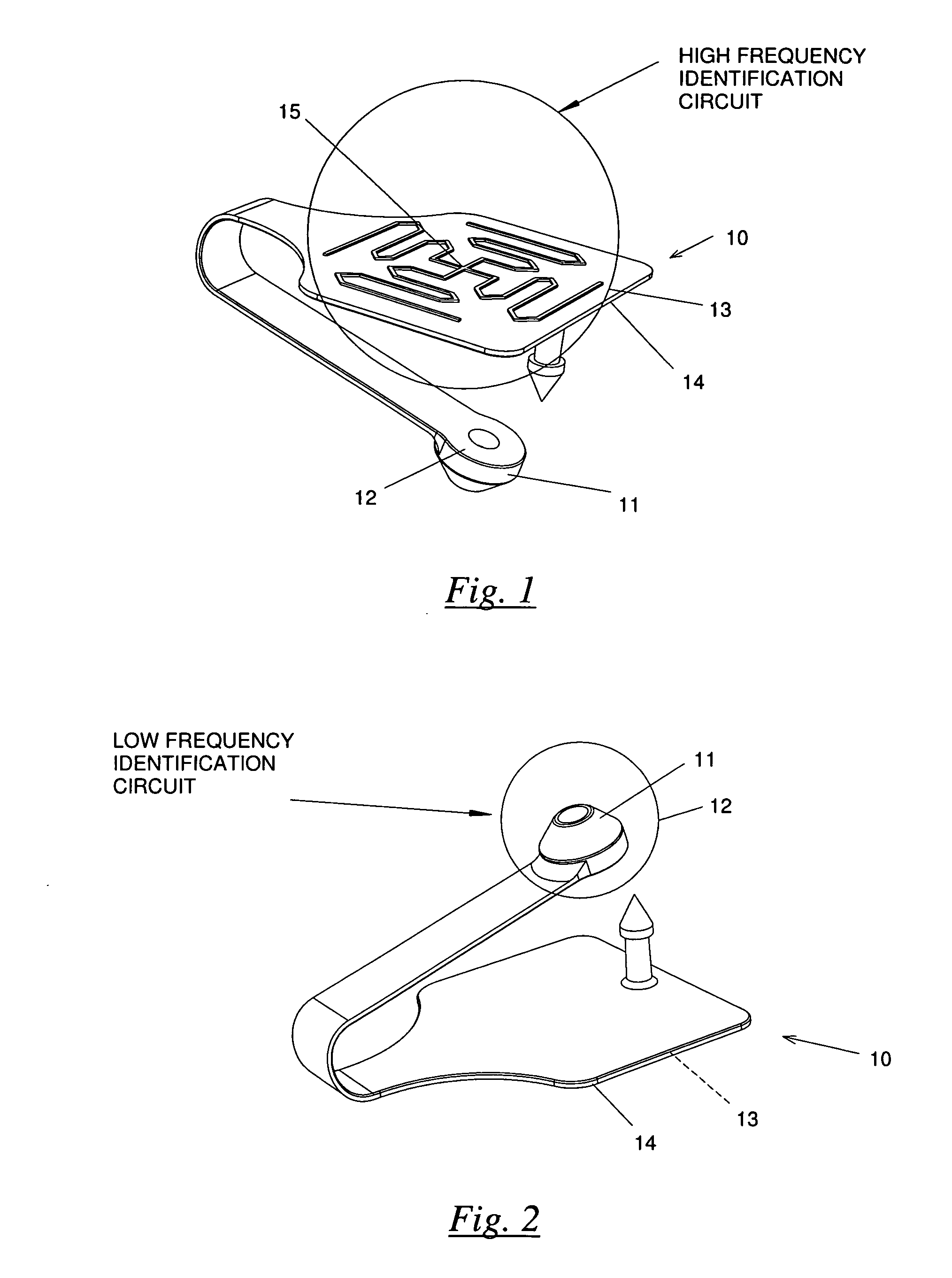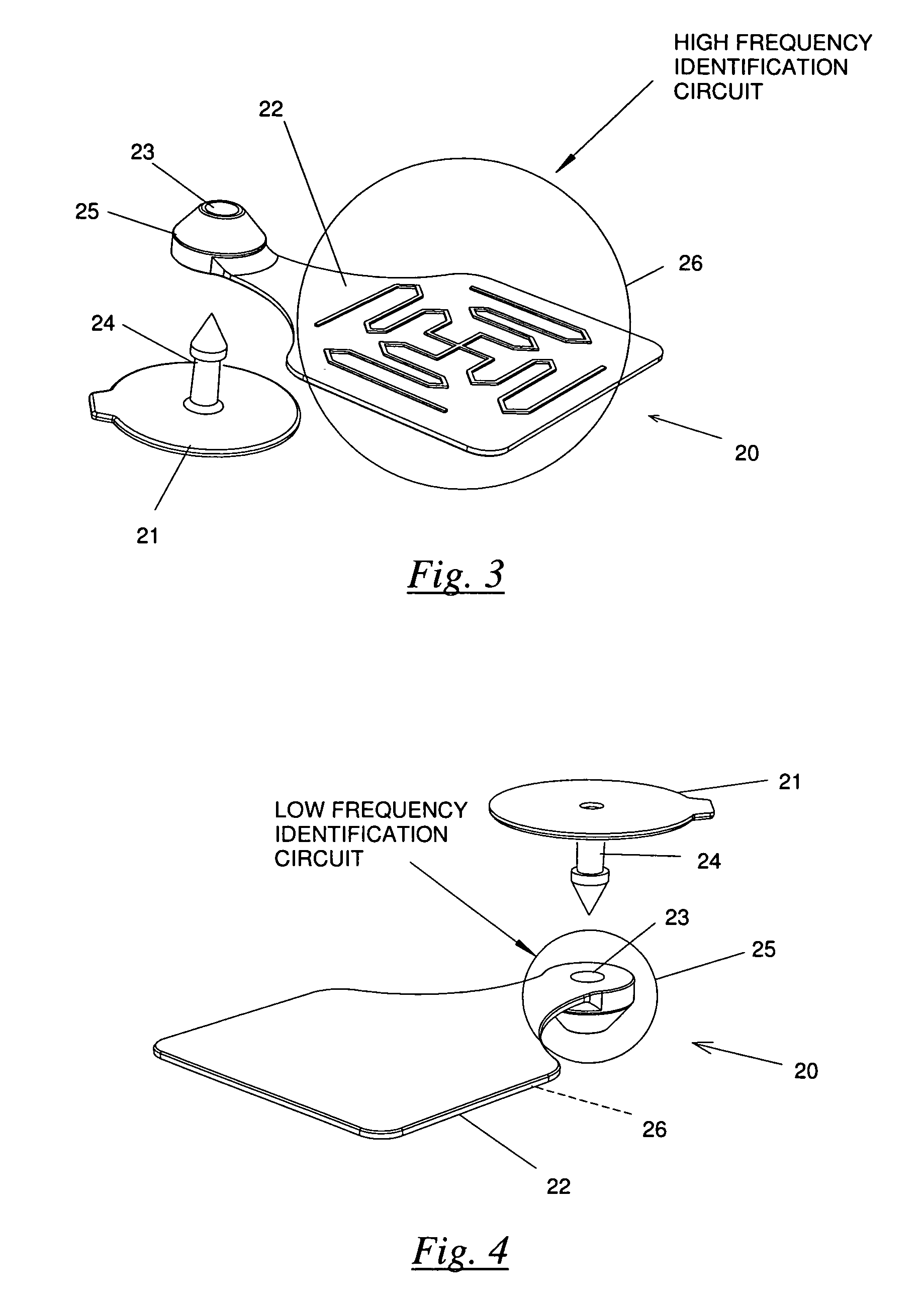Dual frequency identification device
a dual-frequency identification and ear tag technology, applied in the field of radio frequency identification (rfid) devices, can solve the problems of inability to solve the problem of cattle use, the read range of iso ear tags is generally too short, and the inability to insert multiple single-file antennas and readers into such situations
- Summary
- Abstract
- Description
- Claims
- Application Information
AI Technical Summary
Benefits of technology
Problems solved by technology
Method used
Image
Examples
Embodiment Construction
[0020] A radio frequency identification device (RFID) according to the present invention will now be described with reference to FIGS. 1 to 4 of the accompanying drawings.
[0021] The present invention incorporates into one RFID tag both (1) the ISO standard 134.2 kHz RFID technology, and (2) a higher frequency technology, for example 13.56 Mhz, 868-915 Mhz, or 2.45 / 5.8 GHz. The dual frequency tag can incorporate two antennas, optimized for each frequency, and a microchip to operate at each frequency. The unique ISO code would be programmed into both microchips if two microchips are used. Alternatively, a new “dual-channel” microchip can be made to operate at two frequencies, utilizing shared or parallel components, to reduce cost for dual frequency tags.
[0022] The dual frequency tag of the present invention can use either an active or a passive RFID system, or a combination of active and passive systems. For example, the low frequency component of the tag can be a passive system, w...
PUM
 Login to View More
Login to View More Abstract
Description
Claims
Application Information
 Login to View More
Login to View More - R&D
- Intellectual Property
- Life Sciences
- Materials
- Tech Scout
- Unparalleled Data Quality
- Higher Quality Content
- 60% Fewer Hallucinations
Browse by: Latest US Patents, China's latest patents, Technical Efficacy Thesaurus, Application Domain, Technology Topic, Popular Technical Reports.
© 2025 PatSnap. All rights reserved.Legal|Privacy policy|Modern Slavery Act Transparency Statement|Sitemap|About US| Contact US: help@patsnap.com



